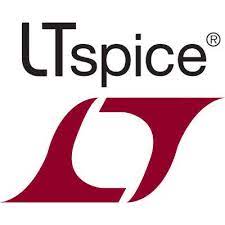LTspice is high performance SPICE simulator software, including a graphical schematic capture interface. This article will serve as an informative guide and give you a clear understanding of how to perform a silent installation of LTspice from the command line using the MSI installer.
How to Install LTspice Silently
LTspice Silent Install (MSI)
- Navigate to: https://ltspice.analog.com/software/LTspice64.msi
- Download the LTspice64.msi to a folder created at (C:\Downloads)
- Open an Elevated Command Prompt by Right-Clicking on Command Prompt and select Run as Administrator
- Navigate to the “C:\Downloads” folder
- Enter the following command: MsiExec.exe /i LTspice64.msi /qn
- Note: If running as the SYSTEM account you must allow user interaction or the installation will fail. See PowerShell script below for working solution.
After a few moments you should see the LTspice Desktop Shortcut appear. You will also find entries in the Start Menu, Installation Directory, and Programs and Features in the Control Panel.
| Software Title: | LTspice |
| Vendor: | Analog Devices Inc. |
| Architecture: | x64 |
| Installer Type: | MSI |
| Silent Install Switch: | MsiExec.exe /i LTspice64.msi /qn |
| Silent Uninstall Switch: | MsiExec.exe /x LTspice64.msi /qn |
| Repair Command: | MsiExec.exe /fa LTspice64.msi /qn |
| Download Link: | https://ltspice.analog.com/software/LTspice64.msi |
| PowerShell Script: | https://silentinstallhq.com/ltspice-install-and-uninstall-powershell/ |
| Detection Script: | https://silentinstallhq.com/create-a-custom-detection-script-for-ltspice-powershell/ |
The information above provides a quick overview of the software title, vendor, silent install, and silent uninstall switches. The download links provided take you directly to the vendors website. Continue reading if you are interested in additional details and configurations.
Additional Configurations
Create a LTspice Installation Log File
The LTspice MSI installer offers the option to generate a log file during installation to assist with troubleshooting should any problems arise. You can use the following command to create a verbose log file with details about the installation.
LTspice Silent Install (MSI) with Logging
MsiExec.exe /i LTspice64.msi /qn /L*v "%WINDIR%\Temp\LTspice-Install.log" |
Change the LTspice Default Installation Directory
You can also change the default installation directory by using the following command line parameters. In this example, I’m installing LTspice to “C:\LTspice”
MsiExec.exe /i LTspice64.msi APPDIR="C:\LTspice" /qn |
LTspice Silent User Install (Just Me)
MsiExec.exe /i LTspice64.msi ALLUSERS=2 MSIINSTALLPERUSER=1 /qn |
How to Uninstall LTspice Silently
Check out the following posts for a scripted solution:
- Open an Elevated Command Prompt by Right-Clicking on Command Prompt and select Run as Administrator
- Enter one of the following commands:
| Version | LTspice Silent Uninstall String |
17.1.5.0 |
MsiExec.exe /x {1A8906EB-2DBA-4ED3-ADB9-043A5CCE87E7} /qn |
17.1.4.0 |
MsiExec.exe /x {D5A79B1F-6DBC-4DFC-81C0-D25D5F20026D} /qn |
17.1.3.0 |
MsiExec.exe /x {C1BAE1FD-6029-401C-BE63-7083B9EF4C6E} /qn |
17.1.2.0 |
MsiExec.exe /x {983F9BFA-2B18-4C19-895D-0A8D1F869413} /qn |
17.1.1.0 |
MsiExec.exe /x {B80A4E8C-B531-4DA1-852A-9D2F82D23FD6} /qn |
Always make sure to test everything in a development environment prior to implementing anything into production. The information in this article is provided “As Is” without warranty of any kind.

